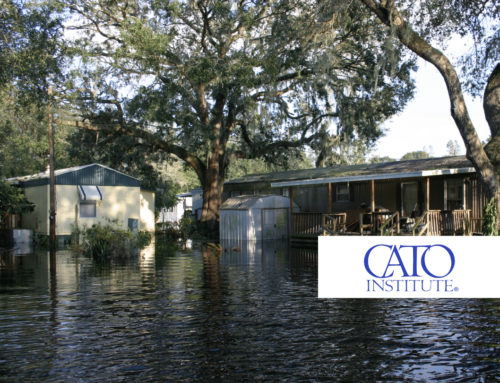View/Download this article in PDF format.
Taxpayers for Common Sense is pleased to join National Resources Defense Council, Reason Foundation, and the American Bus Assocation in a new study comparing the cost of providing subsidized air service from rural airports to the cost of providing the same level of service with high-end intercity busses. In all of the 38 communities, the cost of operating bus service is lower than providing air service, and in many cases, significantly lower. Though TCS supports eliminating the majority of subsidies for Essential Air Service communities (with exception made for Alaska), this report indicates that support for rural communities may be preserved at a far lower cost to taxpayers. In a number of communities, the cost of service would actually be lower than what travelers currently pay (unsubsidized), indicating that on those routes, it is possible that bus service could be run with no subsidy from taxpayers.
Summary
This study compares the costs and environmental effects of supporting rural mobility using scheduled inter-city coach bus service to current costs to maintain air links under the Essential Air Service (EAS) program. The study includes 38 EAS communities in the lower 48 states that are within 150 miles of a medium or large hub airport. For the current EAS program, total costs include government subsidies and passenger fares. For the coach bus alternative, total costs include bus operating costs, and the value of passenger time for alternative bus trips that take longer than current EAS-subsidized flights.
The Results
For the 38 communities included in the study, current EAS-subsidized flights carry 615,528 one-way passengers annually at a total cost of $131.5 million – an average cost of $427 per passenger round trip. For these routes annual EAS subsidies total $60.8 million – 46% of the cost – and passenger fares total $70.7 million. While some routes require a relatively low subsidy, for others the current subsidy amounts to as much as $1,600 per passenger round trip.
This analysis indicates that the same number of scheduled weekly trips between these 38 rural airports and nearby regional hub airports could be provided by coach buses at a total annual operating cost of $33.9 million. Most of the bus trips would take longer than current air flights – if the “cost” to passengers of longer travel time is included it adds an additional $8.0 million to the total cost of the bus alternative. For the 38 communities studied, total costs for coach bus service average $136 per passenger round trip – this is on average 68% less than the cost of current EAS-subsidized flights.
The use of scheduled coach bus service to link these 38 communities to the national air transport system – instead of current EAS-subsidized air service – could save society over $89 million annually. Average savings could be as high as $291 per passenger round trip. Some level of subsidy would likely be required to incentivize coach operators to start new service on most routes, and continuing subsidies might be required on some routes, but projected per passenger bus operating costs on more than half of the routes are lower than current airfares. This indicates that these routes could probably support bus service with no long-term government subsidy; in the long run savings to taxpayers could amount to $50 million or more annually because the cost to operate coach bus service is so much lower than the cost to operate aircraft.
The analysis also shows that using buses instead of aircraft to link these 38 communities to regional hub airports could reduce annual petroleum use by 5.7 million gallons, could reduce annual CO2 emissions by 63,500 tons, and could reduce other harmful air emissions of nitrogen oxides, hydrocarbons, carbon monoxide, and sulfur dioxide.
EAS Program
Begun in 1978 when U.S. airlines were deregulated, the Essential Air Service program provides subsidies to air carriers to maintain scheduled flights between rural communities and regional hub airports – the program currently subsidizes air links to 153 communities in 35 states and Puerto Rico. As of May 2010, annual subsidies under the program total more than $163 million. EAS-subsidized air service typically includes two or three round trips per day, using small regional aircraft, typically with 19 or fewer seats.











Get Social